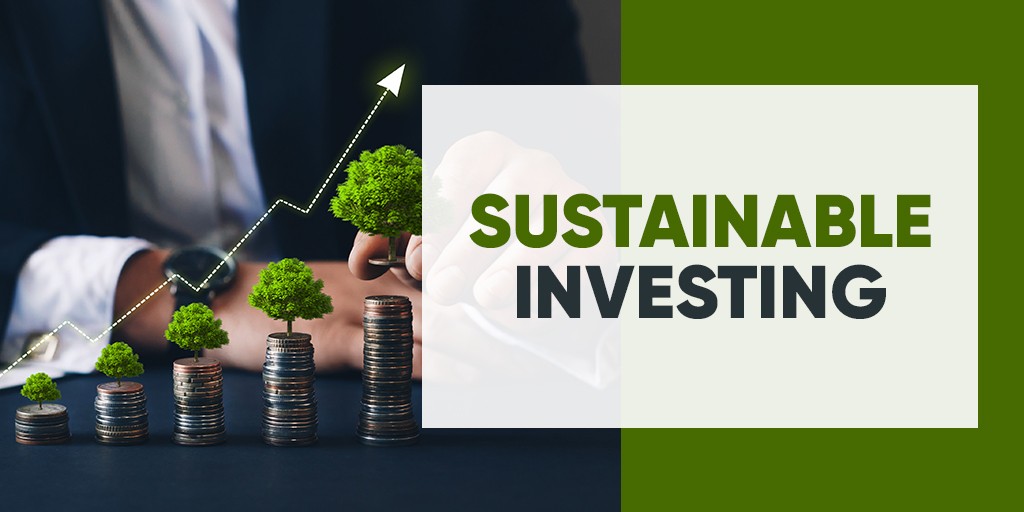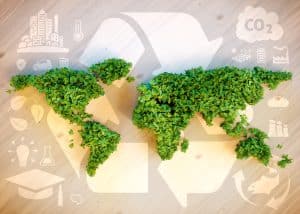The green economy in the United States is reshaping the investment landscape, presenting numerous opportunities for investors in 2024. As the nation commits to sustainable practices and renewable resources, various sectors are experiencing significant growth.
Both businesses and individuals are increasingly prioritizing eco-friendly solutions, leading to heightened demand for innovations that promote environmental well-being while delivering financial returns.
This transition towards a green economy not only tackles urgent environmental challenges but also offers lucrative prospects for those eager to capitalize on this emerging trend.
The rise of renewable energy
One major driver of the US green economy is the rapid expansion of renewable energy, especially solar and wind. By 2024, these sources will make up a significant part of the national energy mix, reducing carbon emissions.
This growth creates investment opportunities in new projects, infrastructure, and technologies like energy storage. Government incentives and favorable regulations enhance the sector’s financial appeal. As costs decrease and efficiency improves, driven by technological advancements, renewable energy is becoming a strong alternative to fossil fuels, offering long-term growth and profitability for investors.
Government policies and incentives
Government policies are key to driving the green economy’s growth. Federal and state initiatives that reduce emissions and support renewable energy projects are spurring investment. Tax credits, grants, and subsidies make sustainable investments financially attractive, encouraging businesses to adopt greener practices.
Alongside financial incentives, stricter environmental regulations push companies to invest in clean technologies, creating a competitive edge for those embracing sustainability. International climate agreements also highlight the US’s leadership in the green economy, attracting foreign investment and fostering collaborations that further enhance the domestic green investment landscape.
Technological innovation and development
The growth of the green economy is closely tied to technological innovation, with advances in clean tech creating fresh investment opportunities. From electric vehicles (EVs) to sustainable agriculture, companies leading these sectors are attracting major investments due to their potential for both high returns and environmental benefits.
The booming EV market, driven by consumer demand and infrastructure development, presents profitable opportunities in areas like vehicle production, battery technologies, and charging stations. Similarly, sustainable agriculture, fueled by innovations like precision farming and vertical agriculture, is reshaping food production. Investors in these sectors are helping build a greener, more sustainable future.
Emerging sectors in the green economy
Emerging sectors in the green economy, like green construction, the circular economy, and sustainable finance, are attracting growing investor interest. These areas, focused on sustainability, offer unique growth opportunities.
Green construction is booming as demand for energy-efficient buildings and materials rises, creating space for eco-friendly projects. The circular economy, which promotes recycling and minimizing waste, is also gaining traction, with businesses embracing sustainable models.
Investors can benefit by supporting these forward-thinking sectors that align with environmental goals and regulatory trends, driving both profitability and societal impact.
Sustainable finance and impact investing
Sustainable finance is key to advancing the green economy, with investment funds and financial products focused on environmental, social, and governance (ESG) criteria attracting significant capital. Investors are increasingly considering ESG factors, recognizing that sustainable investments can offer strong financial returns and positive social outcomes.
Green bonds are becoming a popular tool for funding eco-friendly projects, offering investors a stable way to support green initiatives while earning fixed returns. Similarly, impact investing, which seeks to create measurable social and environmental benefits alongside financial gains, is gaining traction. Both approaches highlight the growing integration of sustainability into finance, combining profit with purpose.
The role of consumer behavior
Consumer behavior is a key driver of the green economy’s growth. Increasing awareness of environmental issues and a shift towards sustainable consumption patterns are influencing market dynamics. Consumers are demanding products and services that align with their values, prompting companies to adopt greener practices.
This shift in consumer preferences creates new investment opportunities in sustainable businesses and innovative solutions that cater to eco-conscious customers. Companies that prioritize sustainability are gaining a competitive edge, attracting loyal customer bases and enhancing brand equity.
Investors are taking note of these trends and channeling funds into businesses that demonstrate a commitment to environmental and social responsibility. The alignment between consumer values and corporate practices is fostering a virtuous cycle of sustainability and profitability.
Moreover, the rise of conscious consumerism is driving the development of new markets and industries. Businesses that offer sustainable alternatives to traditional products are witnessing increased demand and rapid growth.
Investors can tap into this trend by supporting companies that provide eco-friendly products and services, ranging from organic foods to green technologies. The intersection of consumer behavior and sustainability is reshaping the investment landscape, paving the way for a greener economy.


